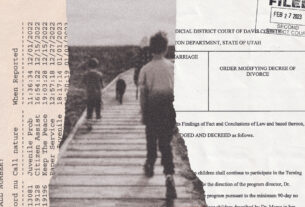Former Irish Prime Minister and current deputy Prime Minister, Leo Varadkar, gave an insight in parliament last week about how policy is made.
Speaking in the Dáil, he told of how a poem by former Minister for Children, Katherine Zappone, read out during a ministerial cabinet meeting, convinced him that he needed to introduce a scheme of redress for residents of the Mother and Baby Homes in Ireland in the 20th century.
The contents of the poem have yet to be revealed, but Mr Varadkar indicated that it was powerfully emotional, telling the Dáil: “I remember her addressing that Cabinet meeting and almost breaking down in tears as she read out a poem she wrote herself on that day”.
“Katherine Zappone, who was a minister in that Government, went down to Tuam, looked in the (septic) tank and the graves, and came back and reported to the Government. She said to us that we needed to be the Government that tried to do something about this.”
It was this rather than a wide-ranging and in-depth report from a Commission of Investigation which convinced the Irish government to act and to set up a redress scheme for Mother and Baby home survivors.
“The reason we took the decision we did during the previous Government, and this Government, was because we listened to people like Catherine Corless and because we engaged with survivors. It was because of Katherine Zappone,” he said.
Prompted by a desk review by amateur historian Catherine Corless, who noticed that there were 800 children on the lists of those who had died in the mid-20th century at the Tuam Mother and Baby Home whose graves could not be located, the Mother and Baby Homes became another institutional scandal in Ireland with the ire of most directed at nuns and religious of Ireland.
Corless’ investigation led to the false claim that the deaths of the babies were covered up and that their remains were dumped in a septic tank on the grounds of the home. Both myths have been demonstrated as false, but the facts have not been allowed to get in the way of a good anti-Catholic story.
The deputy Prime Minister’s reference to Zappone “look[ing] in the tank” is a further allusion to the lie that has taken on the pretence of fact even in government buildings.
Whatever the views on the need for a scheme of redress, it is a poor reflection on the Irish Government that it took a poem to determine the government’s course of action rather than the 2,685 page “Report of the Commission of Investigation into Mother and Baby Homes” which was released in January 2021.
The report was commissioned by the Irish Government in February 2015 to provide a full account of what happened to vulnerable women and children in Mother and Baby Homes during the period 1922 to 1998 and was chaired by eminent judge Yvonne Murphy. It has been largely ignored because it did not confirm the popular perception of the homes.
Much of the commentary around the Mother and Baby homes prior to the publication of the report has been used to create a caricature of evil nuns who set out to torment women and who cared little for the babies born in the institutions.
What the report instead provided was a nuanced and contextualised understanding of the history of the homes, their place in Ireland and similarities with institutions established abroad, and busted the myth that they were places of abuse, discrimination and indentured servitude at the hands of heartless nuns. One main finding was that religious-run institutions were better maintained and a warmer place than those run and controlled by the local authorities.
The report further elaborates that “conditions in the county homes were much worse than in any mother and baby home, with the exceptions of Kilrush and Tuam. In the mid-1920s most had no sanitation, perhaps no running water; heating, where available was by an open fire; food was cooked, badly, often in a different building, so it was cold and even more unpalatable when it reached the women. Many county homes had no place for children to play or space for the women to sit.” The county homes were run by the government.
The Commission itself recommended that the government institute a system of redress, although in less emotional and poetic terms:
“Any decision on financial redress is a matter for government. The Commission recognises that it is not possible to provide financial redress for all the wrongs that occurred in the past (or, indeed, that are currently occurring). It is arguable, for example, that unmarried mothers, who were not in mother and baby homes and who reared their children without any financial assistance from the State, have as good a case for redress as unmarried mothers who were in mother and baby homes paid for by the State … while recognising that all wrongs cannot be put right and that some groups have received financial redress, the Commission considers that the State does have an obligation not to discriminate between people in similar situations. Financial redress has been awarded in the past to a number of groups.”
This was the analysis of a seven-year investigation. Factual and analytical. Yet, apparently what inspired government to take the decision was a poem based on looking in a tank that was never what it was claimed to be.
Former Irish Prime Minister and current deputy Prime Minister, Leo Varadkar, gave an insight in parliament last week about how policy is made.
Speaking in the Dáil, he told of how a poem by former Minister for Children, Katherine Zappone, read out during a ministerial cabinet meeting, convinced him that he needed to introduce a scheme of redress for residents of the Mother and Baby Homes in Ireland in the 20th century.
The contents of the poem have yet to be revealed, but Mr Varadkar indicated that it was powerfully emotional, telling the Dáil: “I remember her addressing that Cabinet meeting and almost breaking down in tears as she read out a poem she wrote herself on that day”.
“Katherine Zappone, who was a minister in that Government, went down to Tuam, looked in the (septic) tank and the graves, and came back and reported to the Government. She said to us that we needed to be the Government that tried to do something about this.”
It was this rather than a wide-ranging and in-depth report from a Commission of Investigation which convinced the Irish government to act and to set up a redress scheme for Mother and Baby home survivors.
“The reason we took the decision we did during the previous Government, and this Government, was because we listened to people like Catherine Corless and because we engaged with survivors. It was because of Katherine Zappone,” he said.
Prompted by a desk review by amateur historian Catherine Corless, who noticed that there were 800 children on the lists of those who had died in the mid-20th century at the Tuam Mother and Baby Home whose graves could not be located, the Mother and Baby Homes became another institutional scandal in Ireland with the ire of most directed at nuns and religious of Ireland.
Corless’ investigation led to the false claim that the deaths of the babies were covered up and that their remains were dumped in a septic tank on the grounds of the home. Both myths have been demonstrated as false, but the facts have not been allowed to get in the way of a good anti-Catholic story.
The deputy Prime Minister’s reference to Zappone “look[ing] in the tank” is a further allusion to the lie that has taken on the pretence of fact even in government buildings.
Whatever the views on the need for a scheme of redress, it is a poor reflection on the Irish Government that it took a poem to determine the government’s course of action rather than the 2,685 page “Report of the Commission of Investigation into Mother and Baby Homes” which was released in January 2021.
The report was commissioned by the Irish Government in February 2015 to provide a full account of what happened to vulnerable women and children in Mother and Baby Homes during the period 1922 to 1998 and was chaired by eminent judge Yvonne Murphy. It has been largely ignored because it did not confirm the popular perception of the homes.
Much of the commentary around the Mother and Baby homes prior to the publication of the report has been used to create a caricature of evil nuns who set out to torment women and who cared little for the babies born in the institutions.
What the report instead provided was a nuanced and contextualised understanding of the history of the homes, their place in Ireland and similarities with institutions established abroad, and busted the myth that they were places of abuse, discrimination and indentured servitude at the hands of heartless nuns. One main finding was that religious-run institutions were better maintained and a warmer place than those run and controlled by the local authorities.
The report further elaborates that “conditions in the county homes were much worse than in any mother and baby home, with the exceptions of Kilrush and Tuam. In the mid-1920s most had no sanitation, perhaps no running water; heating, where available was by an open fire; food was cooked, badly, often in a different building, so it was cold and even more unpalatable when it reached the women. Many county homes had no place for children to play or space for the women to sit.” The county homes were run by the government.
The Commission itself recommended that the government institute a system of redress, although in less emotional and poetic terms:
“Any decision on financial redress is a matter for government. The Commission recognises that it is not possible to provide financial redress for all the wrongs that occurred in the past (or, indeed, that are currently occurring). It is arguable, for example, that unmarried mothers, who were not in mother and baby homes and who reared their children without any financial assistance from the State, have as good a case for redress as unmarried mothers who were in mother and baby homes paid for by the State … while recognising that all wrongs cannot be put right and that some groups have received financial redress, the Commission considers that the State does have an obligation not to discriminate between people in similar situations. Financial redress has been awarded in the past to a number of groups.”
This was the analysis of a seven-year investigation. Factual and analytical. Yet, apparently what inspired government to take the decision was a poem based on looking in a tank that was never what it was claimed to be.
Source link


